Female Construction Workers in India.
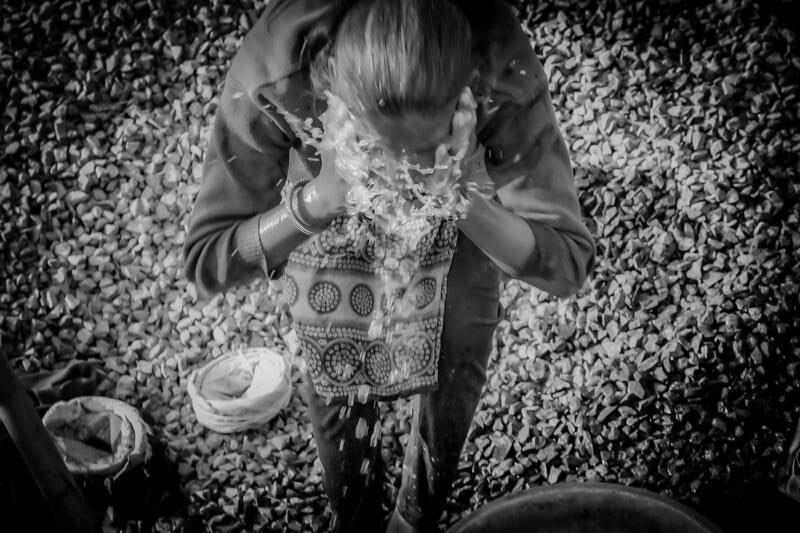
Women Workers in the Construction Industry.
India.
Photographs & text by Bharat Patel.
Over the past several decades India has seen a boom in the construction industry which has attracted workers with multiple levels of skill sets. The unskilled labour is mainly provided by women. Of the female work force in India more than 90% are in the informal sector, of which the construction industry is the largest sector. According to the National Sample Survey Organization, women make up approximately 11% of the construction workforce in India though this figure could be much higher. Workers in the informal sectors do not have regular salaried employment with welfare benefits like workers in the organised sector. Though these women form a large part of the economy their work is never recognised and hence remains invisible and voiceless. They are not incorporated in any nation development agendas. Many remain internal migrants without any say.
On my first visit to a construction site in India some 15 years back, I was fascinated by the amount of work the women were undertaking. Many had their young children at the site, who needed constant attention while the mother carried out strenuous work. Some working while being pregnant and some working only a few days after having given birth. Most women were be-tween 25 to 45 years of age but many as young as 15. From the first visit, I have been visiting construction site almost every year to photograph the men and women who help build towns and cities.

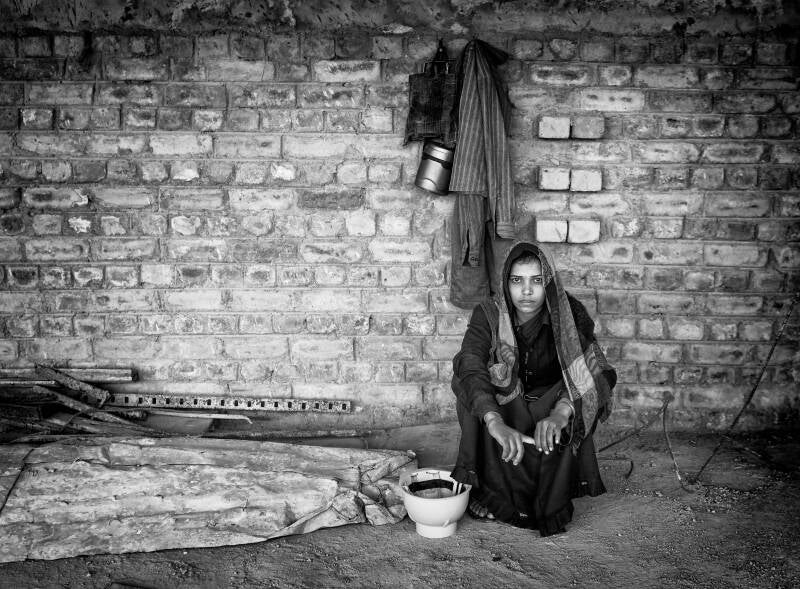
Photo at top:
End of the working day wash, to rid of the dust gathered on the face.
Photos above:
Hammocks for the children and a few blankets on the ground for the adults.
A woman rests during lunch break with a newly introduced safety helmet on the floor by her side.
Photo below:
A concreting former is carried up several flights of steps
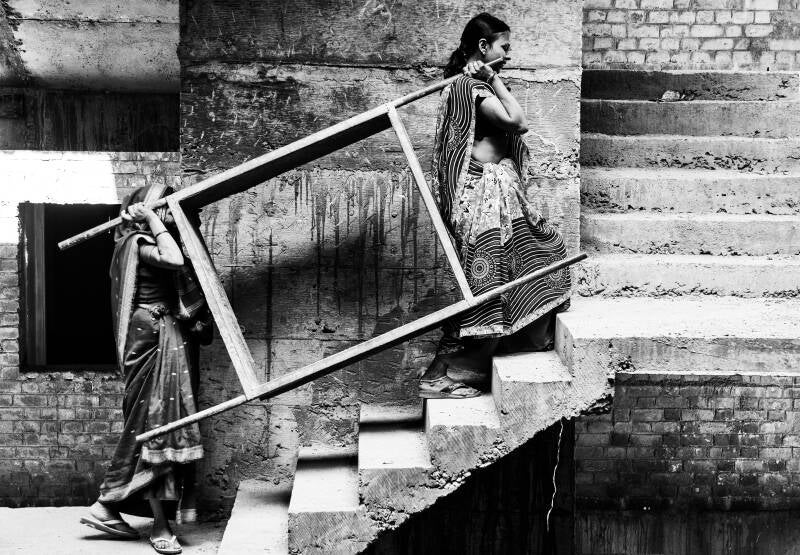
According to prevailing practice in the construction industry, the builder employs contractors who in turn use agents to undertake the task of supplying the work force. Women make up a large part of the unskilled labour needed. Many of these women come from migrant worker families, moving from place to place to find work in construction. Others come from tribal (Adivasi) areas where traditional gender roles often limit women's opportunities for education and employment. These Adivasis are preferred source of labour as they are hardy and subservient, usually illiterate who tend to make a living through their own labour. Every year soon after the monsoon rains these recruits head towards the cities, sometimes as family units. They would normally stay at or very near the construction site in make-shift rooms for months at a time until the building is complete.


Photos above:
Manual labour on narrow wooden boards is a common feature.
The work is hard and the pay is low but the dignity and grace is clear to see in this female labourer.
Photo below:
Conditions are certainly dangerous. Here a woman works directly below a heavy mechanical brick hod.

There is also another system of recruiting from “Kadianaka” or builders’ corner, a place in almost all towns and cities where labourers, both men and women gather in the morning and from where agents or contractors pick them up to work for the day.
In a typical work format at construction sites, the men work as masons, brick layers and plasters while the women work as unskilled labour to complement their work. Women’s task is of mixing cement and to transport that and bricks to where they are needed. I have seen women shift hundreds of bricks over several floors on their heads per day.
The average daily wage of construction workers in India was Rs. 350 (about USD 4.5) in 2022. In general, women working in construction in India are paid less than their male counterparts. This gender pay gap is due to a variety of factors, including discrimination, and social norms that value men's labour more highly than women.
These images make up a larger documentary on women workers and were taken over several years to show women in the construction industry using their only asset – their labour, carrying out back breaking work un-der hazardous and unprotected work environment. Like in many other parts of the world to be poor and a woman is to be exposed to vulnerability and exploitation.
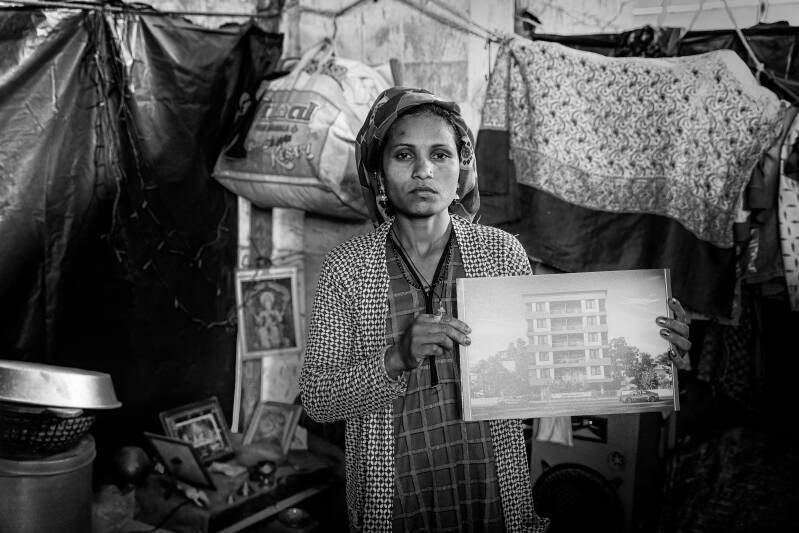

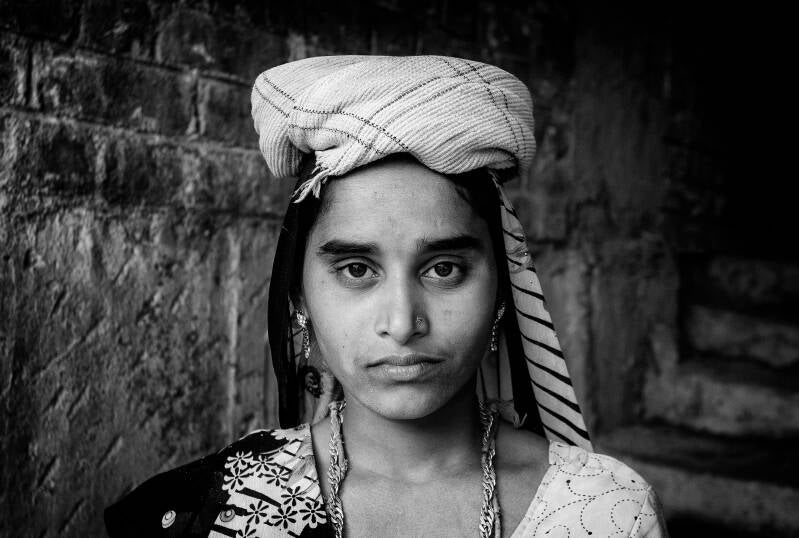
Photos from top left:
A worker shows off the brochure of the building she is working on. Architect and Builders get all the recognition but the workers who toil to build it get no mention.
Flip-Flops are fairly standard, as is barefoot working.
A female construction worker with "protective" head gear.

Photo above:
A woman works at height without safety equipment, her day is long and arduous.
Her family await her return with anxiety.
Photo below:
A woman works under perilous conditions without safety equipment.


Photos from left:
At the end of the day a woman washes her husbands plastering tools before another early start the next day and more building materials arrive, which means more bricks to haul.
Main photo below:
A mother and child inside their primitive housing.

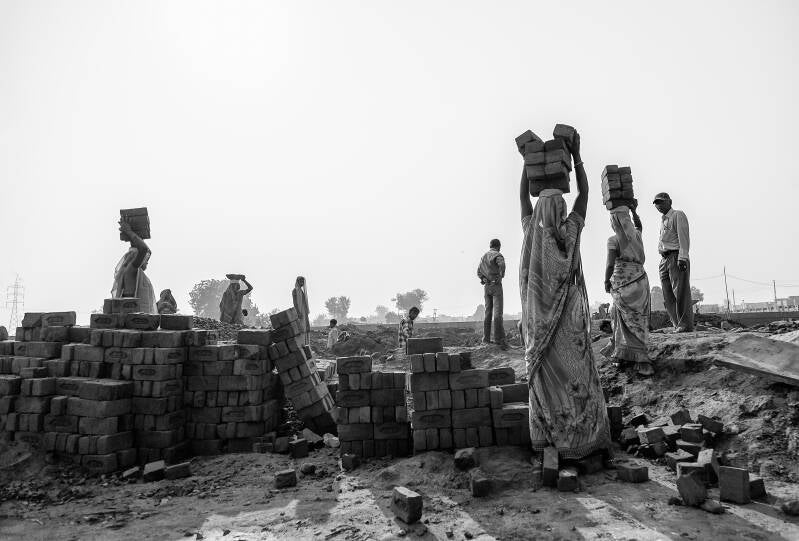
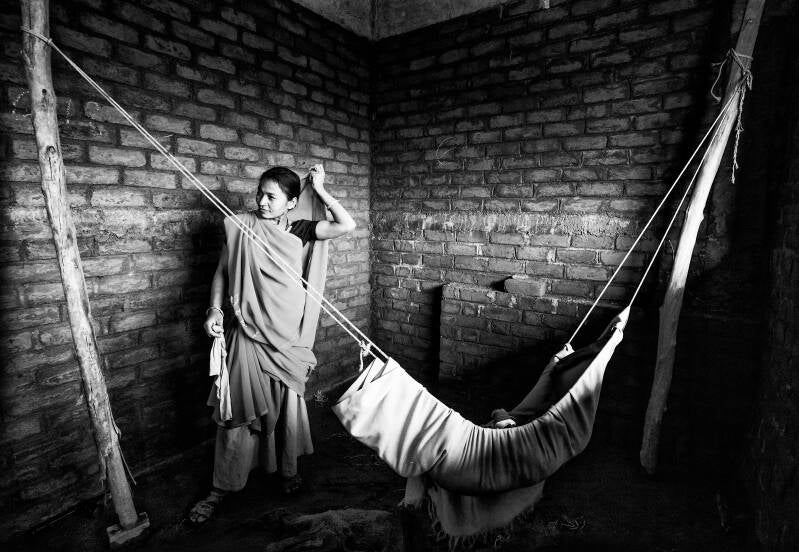
Thanks for reading.